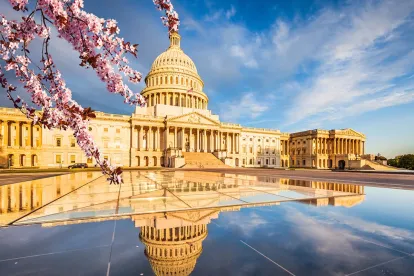Late last night, Congress released the text of the Omnibus spending bill, which includes the “EB-5 Reform and Integrity Act” at page 2609. With government funding expiring March 11 we anticipate passage of this bill in the next few days.
After nearly 8.5 months of a lapsed EB-5 Regional Center program, Congress has authorized a longer-term reform of the EB-5 program and reauthorized the Regional Center program. See the previous link to blogs about the lapse.
This reauthorization does the following:
-
EB-5 “Regional Center” Program Re-Authorized
-
Through Sept. 30, 2027
-
-
Targeted Employment Area (TEA) Designations
-
TEA projects qualify for both the lower investment levels and the visa set-asides (see below)
-
Rural Projects
-
In areas outside a Metropolitan Statistical area, or within the outer boundary of any city or town with a population of 20,000 or more. (No change from prior law)
-
Priority processing for rural projects
-
-
Distressed Urban Area Projects (“High Unemployment Areas”)
-
Codifies the 2019 USCIS regulation (“donut” approach)
-
Project must be located in a census tract – or any “contiguous” census tracts that “touch” the project’s tract – where average unemployment rate for the tracts is 150% of the national average unemployment rate
-
DHS Secretary has the discretion to include a “directly adjacent” tract (to either the “anchor” tract or a “contiguous” tract) to satisfy the requisite 150% high unemployment criteria
-
-
Infrastructure Projects
-
A “capital investment project” administered by a “governmental entity” that serves as the “job-creating entity” which receives capital from EB-5 investors, and contracts with a regional center.
-
-
-
Investment Amounts
-
$800,000 in TEAs
-
$1,050,000 in non-TEAs
-
On Jan. 1, 2027, and every five years thereafter, investment amounts adjust for inflation.
-
-
Visa set-asides
-
Set-asides are a percentage of the ~10,000 EB-5 visas available every year
-
20% for rural projects
-
10% for distressed urban area projects
-
2% for infrastructure projects
-
Unused visas “carry over” in the same category in the immediately following year
-
Unused visas in any category made generally available for any project, in the year immediately following the “carry-over” year
-
-
Redeployment of Capital
-
DHS to enact regulations that allow the new commercial enterprise to redeploy capital anywhere in the United States to keep the investment “at risk”
-
-
Job Creation
-
10 jobs must be created per investment (same as prior law)
-
One job must be a “direct” job; the other nine can be modeled, estimated “indirect” jobs
-
Construction jobs that last less than two years can satisfy 75% of estimated “indirect” jobs
-
-
Concurrent Filing of I-526 and I-485
-
Investors can concurrently file their I-526 petitions (showing EB-5 compliance and investment) and their I-485 petitions (application for a “conditional” green card, which adjusts status from a “non-immigrant” to a conditional permanent resident if a visa is available.
-
-
“Grandfathering” Existing Investors
-
If Congress fails to reauthorize regional centers after the Act’s expiration Sept. 30, 2027, DHS shall continue to process petitions filed on or before Sept. 30, 2026.
-
-
Integrity Measures
-
New measures to prevent fraud and abuse and to provide tools to DHS to prevent national security breaches.
-
It is also the first time since 2015 that the EB-5 Regional Center program has been authorized for more than just the current appropriations process. The EB-5 industry came together and pushed for comprehensive reforms. Several of those key reforms did not make it into this legislation including much-needed immigrant visa backlog relief.



 />i
/>i

